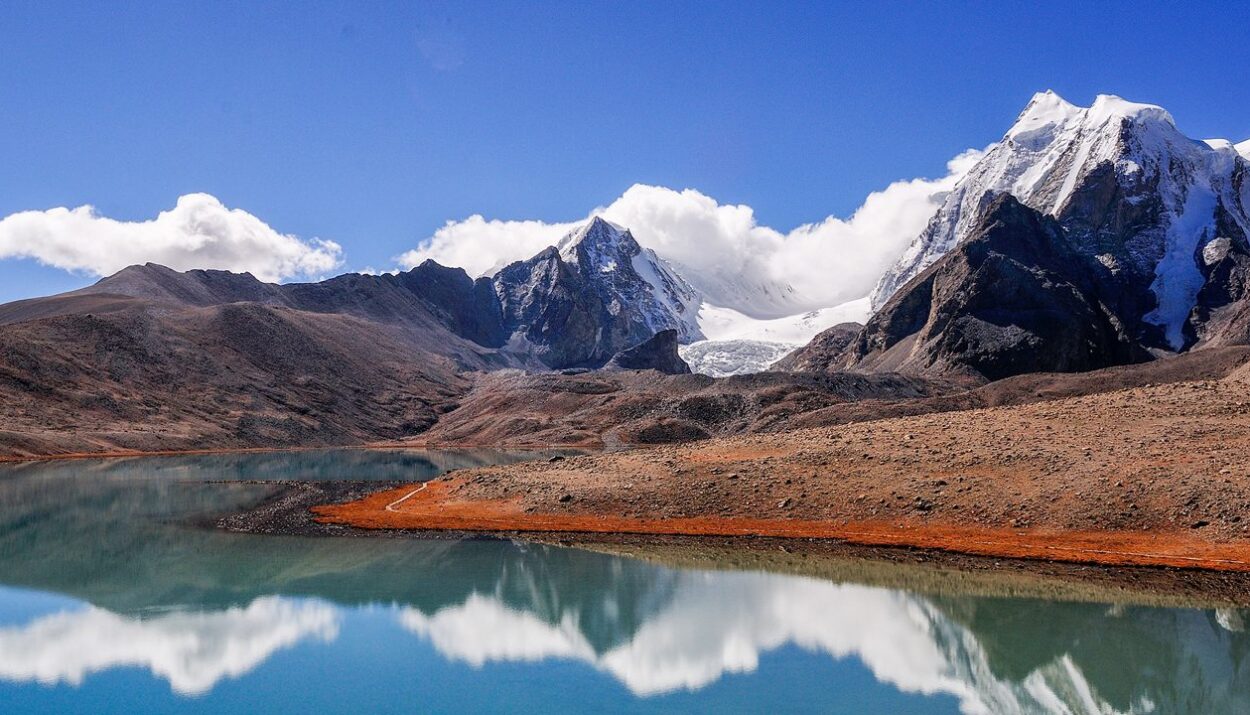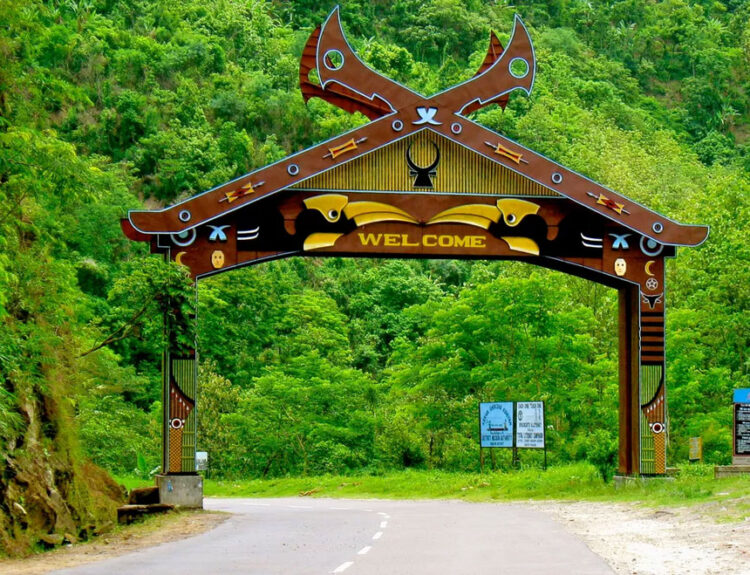Nestled in the lap of the Himalayas, Sikkim is a small yet captivating state in northeastern India, bordered by Tibet to the north, Bhutan to the east, and West Bengal to the south. This enchanting land is renowned for its breathtaking landscapes, rich biodiversity, and vibrant culture. With an area of just 7,096 square kilometers, Sikkim may be one of the smallest states in India, but it boasts an impressive array of natural wonders and cultural treasures that draw travelers from around the globe.
The state’s capital, Gangtok, serves as a gateway to its many attractions, offering a blend of modernity and tradition that reflects the unique character of Sikkim. Sikkim’s geographical diversity is remarkable, ranging from lush valleys and terraced fields to towering snow-capped peaks. The state is home to Kanchenjunga, the third-highest mountain in the world, which holds immense spiritual significance for the local people.
The rich tapestry of Sikkim’s culture is woven from the threads of various ethnic groups, including Lepchas, Bhutias, and Nepalis, each contributing to the state’s unique identity. This harmonious coexistence of different communities has fostered a sense of unity and pride among the residents, making Sikkim a true melting pot of traditions and customs.
Key Takeaways
- Sikkim is a land of enchantment, known for its natural beauty, rich cultural heritage, and vibrant festivals.
- From glaciers to lakes, Sikkim offers a range of natural wonders that attract visitors from around the world.
- Sikkim’s cultural diversity is reflected in its rich heritage, with influences from Tibetan, Nepalese, and Indian traditions.
- Adventure seekers can enjoy trekking, rafting, and more in Sikkim’s stunning landscapes.
- Sikkim’s wildlife sanctuaries are home to a diverse range of flora and fauna, offering unique opportunities for nature enthusiasts.
Natural Wonders of Sikkim: From Glaciers to Lakes
Lakes of Unparalleled Beauty
One of the most famous lakes is Tsomgo Lake, located at an altitude of 3,753 meters. This oval-shaped lake is surrounded by snow-capped peaks and is often covered in a blanket of ice during winter. The lake’s serene waters reflect the stunning landscape, making it a popular destination for tourists seeking tranquility and breathtaking views.
A Sacred and Breathtaking Destination
Another gem in Sikkim’s treasure trove of natural wonders is Gurudongmar Lake, situated at an elevation of 5,430 meters. Revered as one of the highest lakes in the world, Gurudongmar is not only a visual spectacle but also holds religious significance for both Buddhists and Sikhs. The lake remains partially frozen even during summer months, adding to its ethereal beauty.
A Journey Like No Other
The journey to Gurudongmar is an adventure in itself, as travelers navigate through rugged terrains and experience the stark contrast between the arid landscape and the vibrant blue waters of the lake.
Cultural Diversity: Exploring Sikkim’s Rich Heritage
The cultural landscape of Sikkim is as diverse as its geography. The state is home to a multitude of ethnic groups, each with its own distinct traditions, languages, and customs. The Lepchas, considered the original inhabitants of Sikkim, have a rich oral tradition and are known for their deep connection to nature.
Their festivals often revolve around agricultural cycles and are celebrated with traditional music and dance. The Bhutias, who migrated from Tibet, bring with them their unique Buddhist practices and architectural styles that are evident in the many monasteries scattered across the state. The Nepali community forms a significant part of Sikkim’s demographic fabric and has greatly influenced the local cuisine, language, and festivals.
Dashain and Tihar are two major festivals celebrated with great enthusiasm by the Nepali population. These festivals not only showcase vibrant rituals but also foster a sense of community among different ethnic groups. The coexistence of various cultures in Sikkim creates a rich tapestry that is reflected in its art forms, music, and dance, making it a fascinating destination for those interested in cultural exploration.
Adventure in Sikkim: Trekking, Rafting, and More
| Activity | Duration | Difficulty |
|---|---|---|
| Trekking in Kanchenjunga National Park | 5 days | Challenging |
| River Rafting in Teesta River | 2 hours | Moderate |
| Paragliding in Gangtok | 30 minutes | Easy |
| Mountain Biking in Silk Route | 3 days | Challenging |
For adventure enthusiasts, Sikkim offers an array of thrilling activities that cater to all levels of experience. Trekking is perhaps one of the most popular pursuits in this mountainous state. The Kanchenjunga Base Camp trek is a highlight for many trekkers, providing an opportunity to witness stunning vistas of the majestic Kanchenjunga range while traversing through lush forests and quaint villages.
The trek typically spans over ten days and takes adventurers through diverse landscapes, allowing them to immerse themselves in the natural beauty and cultural richness of Sikkim. In addition to trekking, Sikkim is also known for its exhilarating river rafting experiences. The Teesta River, with its gushing rapids and scenic surroundings, attracts thrill-seekers looking for an adrenaline rush.
Rafting on the Teesta offers not only an exciting adventure but also a chance to witness the stunning landscapes that line its banks. The river flows through lush green valleys and rocky gorges, providing a unique perspective on Sikkim’s natural beauty while ensuring an unforgettable experience for participants.
Wildlife Sanctuaries: Discovering Sikkim’s Biodiversity
Sikkim’s diverse ecosystems are home to a rich variety of flora and fauna, making it a haven for wildlife enthusiasts and nature lovers alike. The Khangchendzonga National Park, a UNESCO World Heritage Site, is one of the most significant wildlife sanctuaries in the region. Spanning over 1,784 square kilometers, this park encompasses a range of altitudes and habitats, from subtropical forests to alpine meadows.
It is home to several endangered species such as the red panda and snow leopard, as well as numerous bird species that attract ornithologists from around the world. Another notable sanctuary is the Fambong Lho Wildlife Sanctuary, located just a short distance from Gangtok. This sanctuary is known for its rich biodiversity and offers opportunities for trekking and birdwatching.
Visitors can spot various species of orchids and rhododendrons while exploring the sanctuary’s trails. The sanctuary plays a crucial role in conservation efforts and serves as a vital habitat for many species that are endemic to the region.
Cuisine of Sikkim: A Gastronomic Delight
Sikkim’s culinary landscape is as diverse as its culture, offering a delightful array of flavors that reflect its rich heritage. The cuisine is heavily influenced by the local ingredients available in this mountainous region. One of the most iconic dishes is momos—steamed dumplings filled with vegetables or meat—often served with spicy chutney.
These delectable treats have become synonymous with Sikkimese cuisine and are enjoyed by locals and tourists alike. Another staple dish is phagshapa, which consists of pork cooked with radishes and spices. This hearty meal showcases the use of fresh ingredients sourced from local farms and reflects the traditional cooking methods passed down through generations.
Additionally, Sikkimese cuisine features a variety of soups and stews that incorporate local herbs and spices, creating unique flavors that tantalize the taste buds. The emphasis on organic farming in Sikkim further enhances the quality of its food, making dining here not just a meal but an experience steeped in tradition.
Festivals and Celebrations: Experiencing Sikkim’s Vibrant Culture
The vibrant culture of Sikkim comes alive during its numerous festivals throughout the year. One such celebration is Losar, the Tibetan New Year festival celebrated by the Bhutia community. This festival marks the arrival of spring and involves various rituals such as prayers at monasteries, traditional dances, and feasting on special dishes.
The colorful attire worn during Losar adds to the festive atmosphere as families come together to celebrate with joy and reverence. Another significant festival is Bhumchu, celebrated at the Tashiding Monastery. This unique event involves the unveiling of sacred water pots believed to predict the fortunes for the coming year based on their levels.
Devotees gather at the monastery to participate in prayers and rituals that reflect their deep spiritual beliefs. Such festivals not only provide insight into Sikkim’s rich cultural heritage but also foster community bonds as people come together to celebrate their shared traditions.
Sustainable Tourism in Sikkim: Preserving the Enchanting Beauty
As tourism continues to grow in Sikkim, there is an increasing emphasis on sustainable practices aimed at preserving its natural beauty and cultural heritage. The state government has implemented various initiatives to promote eco-friendly tourism that minimizes environmental impact while benefiting local communities. For instance, homestays have gained popularity as they allow visitors to experience authentic Sikkimese hospitality while supporting local families economically.
Moreover, Sikkim has taken significant steps towards becoming a fully organic state by promoting organic farming practices among its farmers. This initiative not only ensures that visitors enjoy fresh produce but also contributes to environmental conservation by reducing chemical usage in agriculture. By prioritizing sustainability in tourism development, Sikkim aims to protect its enchanting landscapes while providing travelers with meaningful experiences that connect them to nature and local culture.
In conclusion, Sikkim stands as a testament to nature’s splendor and cultural richness. Its breathtaking landscapes offer endless opportunities for exploration while its diverse communities create a vibrant tapestry of traditions that enrich every visitor’s experience. As sustainable tourism practices take root in this enchanting land, Sikkim continues to inspire awe and admiration among those fortunate enough to visit its remarkable terrain.
If you’re interested in exploring the vibrant culture of Sikkim, you may also want to check out this article on 25 things you’ll absolutely love about the region. From its stunning landscapes to its rich history, Sikkim offers a unique and unforgettable experience for travelers.








